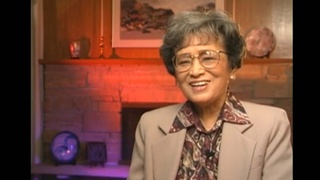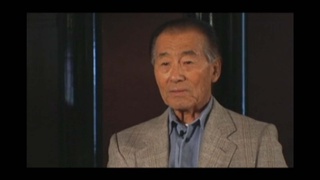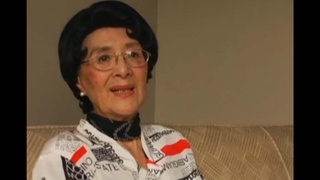Interviews
His mother’s money belt
We were inland a little bit so there wasn’t a big Japanese community there so the people in LA I think got to Manzanar and they sent us to um, to Poston Arizona.
Literally they had to stuff um, straw into mattresses to make a, you know, to make the mattress. My mother uh, really was quite brilliant, alright? She took a money belt, made it herself, put a thousand dollars in cash in it, and wore it for three and a half years.
Without that money, we come back from camp, we could not start the store and luckily, my mother was a citizen. If she wasn’t a citizen, people understand this, she could not, we could not own property.
Date: September 8, 2011
Location: California, US
Interviewer: John Esaki, Kris Kuramitsu
Contributed by: Watase Media Arts Center, Japanese American National Museum
Explore More Videos

Erasing the Bitterness
(1923–2008) One of the leaders behind the redress movement.

Speaking out in camp
(1916-2010) draft resister, helped form the Heart Mountain Fair Play Committee

Would do the same again
(1916-2010) draft resister, helped form the Heart Mountain Fair Play Committee

Traumatic experiences before camp
(1913-2013) Doctor specializing in obstetrics in Southern California

“Everybody went in like sheep”
(1913-2013) Doctor specializing in obstetrics in Southern California

A Lifestyle Using Both Japanese and Spanish (Japanese)
(b. 1929) President of Amano Museum

Going to camp with the Terminal Island people
(1927-2010) Political Activist


Interned at age fifteen, I saw camp as an adventure
(1927-2010) Political Activist

Camp as a Young Boy
(b. 1934) The First Japanese American Appointed to the U.S. Court of Appeals.

The riot in Manzanar
(b. 1921) Nisei veteran who served in the occupation of Japan

Father’s Optimism
(b. 1934) Award-winning Disney animation artist who was incarcerated at Topaz during WWII

The lack of discussion about family’s incarceration in Amache
Sansei judge for the Superior Court of Los Angeles County in California

